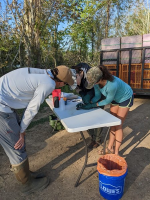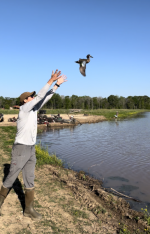Madislander
Member
Does anyone have any information or links to articles on the impacts of bird flu on wild birds? I've done a quick Google search but all I can really find is about pen raised and pheasant farms. Thanks



help will be available after Title 42 is dropped.I have a hard time believing this disease is transfer by wild waterfowl. Most these poultry farms are raise in enclose buildings. My feelings about this is the living conditions of the birds. There way too many birds in building, poor ventilation and filth. With labor shortages, I bet it's hard to find employees to do these jobs in maintaining suitable living conditions.
Where I live we have a lot turkey farms, they have manure pile that's 10 feet high waiting to spread on the fields in winter and spring. When rains you can smell it a mile away down wind. I would more concern about geese and ducks that feed in these fields.
